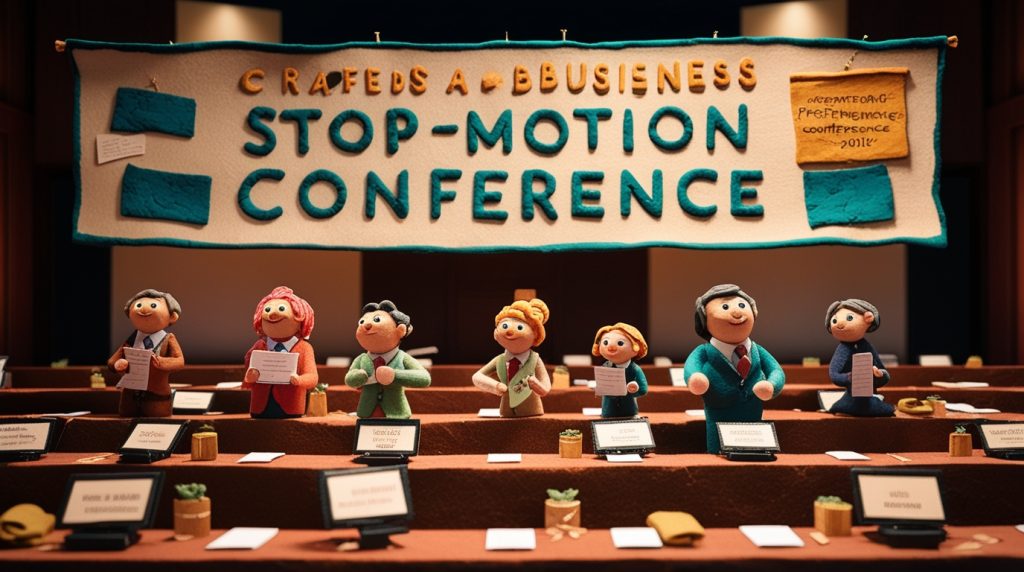When political conflicts reach a deadlock, dialogue becomes the bridge to progress. The 1st Round Table Conference (1930) was a pivotal moment in India’s freedom struggle — the first formal meeting between British officials and Indian representatives to discuss constitutional reforms.
This historic event, held in London between November 1930 and January 1931, marked the beginning of a structured political dialogue between colonial rulers and Indian leaders. Understanding its objectives, key participants, and outcomes provides valuable insight into how India’s constitutional framework evolved under colonial rule.
Background: Why the 1st Round Table Conference Was Convened
The 1st Round Table Conference emerged from growing political unrest and the failure of the Simon Commission (1927). The Commission, composed entirely of British members, excluded Indians, sparking widespread protests under the slogan “Simon Go Back!”
To address the backlash and the growing demand for self-governance, British Prime Minister Ramsay MacDonald called for a series of conferences in London to discuss India’s future constitutional setup.
Key Context Leading to the Conference
- Simon Commission Boycott: All major Indian parties opposed it for excluding Indian representation.
- Civil Disobedience Movement: Led by Mahatma Gandhi, it had gained momentum across India.
- British Political Pressure: Global depression and domestic criticism pushed Britain to engage with Indian leaders.
The 1st Round Table Conference was thus a response to both internal rebellion and international scrutiny of Britain’s colonial policies.
Participants: Who Attended the 1st Round Table Conference?
The conference included over 89 delegates, representing various political, social, and communal groups in India. However, the Indian National Congress (INC) — the principal political force — boycotted the session as a mark of protest against ongoing political repression.
Major Participants
- British Delegation: Led by Prime Minister Ramsay MacDonald and Secretary of State for India, William Benn.
- Indian Princes: Represented through the Chamber of Princes, including Maharaja of Bikaner and Maharaja of Patiala.
- Muslim League Representatives: Led by Aga Khan III and Muhammad Ali Jinnah.
- Depressed Classes: Represented by Dr. B. R. Ambedkar, advocating for separate electorates.
- Liberals & Minorities: Including Tej Bahadur Sapru, M. R. Jayakar, and Sir Mirza Ismail.
Notable Absence
- The Indian National Congress, then spearheading the Civil Disobedience Movement, refused participation, severely limiting the conference’s legitimacy in the eyes of Indian masses.
Objectives: What the Conference Aimed to Achieve
The British government outlined several primary goals for the conference:
- Discussing a New Constitutional Framework: To introduce responsible government at provincial levels.
- Ensuring Representation of All Communities: Addressing communal concerns among Hindus, Muslims, Sikhs, and the Depressed Classes.
- Balancing Dominion Status & British Control: Negotiating limited self-rule without compromising imperial interests.
Essentially, the 1st Round Table Conference was not about granting independence, but about redefining control — attempting to pacify Indian demands while maintaining British authority.
Discussions and Debates: Clash of Visions
The conference saw intense debates on federal structure, communal representation, and political safeguards.
Key Themes Discussed
- Federal Constitution: Proposal to integrate princely states with British India under a federal system.
- Minority Rights: Separate electorates and reserved seats were proposed for religious and social minorities.
- Provincial Autonomy: Agreement on extending self-governance at the provincial level.
- Central Government Structure: Disagreement over the distribution of powers between provinces and the center.
Dr. B. R. Ambedkar’s strong advocacy for the rights of the Depressed Classes was one of the most defining aspects of the discussion. He emphasized political safeguards and equitable representation.
Outcomes: What Did the 1st Round Table Conference Achieve?
Although no immediate constitutional reform resulted, the conference produced significant political outcomes.
Main Outcomes
- Federal Proposal Accepted in Principle: Agreement that India would eventually have a federal government combining British provinces and princely states.
- Constitutional Reform Drafting Began: The British government started preparing a draft constitution.
- Groundwork for Future Talks: Set the stage for the Second Round Table Conference (1931), where the Congress later participated.
However, the absence of the Indian National Congress made the conference politically incomplete. The lack of representation from the most influential political body meant that decisions lacked popular support.
Aftermath: Towards the Second Round Table Conference
Following the conference, Mahatma Gandhi’s Civil Disobedience Movement continued to gain traction. Recognizing the Congress’s indispensable role, the British initiated negotiations with Gandhi, leading to the Gandhi-Irwin Pact (March 1931).
As a result:
- The Congress agreed to suspend the Civil Disobedience Movement.
- Gandhi was invited to represent the Congress at the Second Round Table Conference later that year.
Thus, while the 1st Round Table Conference failed to achieve concrete reforms, it opened the door to future dialogue that would eventually shape the Government of India Act of 1935.
Historical Significance of the 1st Round Table Conference
The event holds enduring importance in India’s colonial history for several reasons:
- First Official Dialogue: It initiated formal constitutional discussions between Britain and India.
- Representation of Minorities: Set a precedent for minority and depressed class representation in political processes.
- Foundation for Federal Structure: Ideas debated here influenced the later constitutional design.
- Catalyst for Political Unity: Demonstrated the necessity of Congress participation for legitimate reform.
Key Takeaways
| Aspect | Details |
|---|---|
| Date | November 12, 1930 – January 19, 1931 |
| Location | London, St. James’s Palace |
| Presided by | British PM Ramsay MacDonald |
| Indian Participation | 89 delegates (No Congress representation) |
| Main Outcome | Federal principle accepted; groundwork for future talks |
| Historical Importance | Laid foundation for the Government of India Act (1935) |
FAQs on the 1st Round Table Conference
1. What was the main purpose of the 1st Round Table Conference?
The primary aim was to discuss constitutional reforms for India and introduce a federal system with representation for different communities.
2. Why did the Indian National Congress boycott the conference?
The Congress boycotted it as a protest against repressive British actions during the Civil Disobedience Movement.
3. Who represented the Depressed Classes at the conference?
Dr. B. R. Ambedkar represented the Depressed Classes, strongly advocating for political safeguards.
4. Where was the 1st Round Table Conference held?
It was held in London at St. James’s Palace.
5. What was the outcome of the conference?
Although no immediate reforms were achieved, it accepted the federal idea and prepared the groundwork for later constitutional developments.
6. Who attended the conference from the British side?
Prime Minister Ramsay MacDonald, Secretary William Benn, and several British officials participated.
7. What followed the 1st Round Table Conference?
The Gandhi-Irwin Pact and the Second Round Table Conference (1931) followed, where Gandhi represented the Indian National Congress.
Conclusion: Dialogue as the First Step Toward Freedom
The 1st Round Table Conference was not a success in terms of tangible reforms, but it symbolized India’s entry into constitutional dialogue. It highlighted that true progress could only occur through inclusive participation — something realized in later negotiations.
By bridging ideological divides, it paved the way for India’s eventual march toward self-rule.
To explore more historical and contemporary global conferences, visit Conferences Daily and stay informed about upcoming academic and professional events worldwide.


 (3 votes, average: 4.33 out of 5)
(3 votes, average: 4.33 out of 5)












